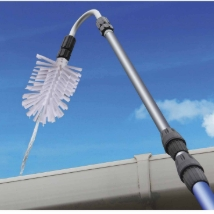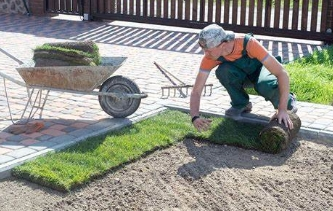Climate change and increasing global warming have been significant concerns today. We are all witnessing its effects at various levels, which are indeed a threat to humanity, nature, and its inhabitants. So, what could be done to solve this global problem?
Various measures could be taken at global and individual levels to control and reverse this deterioration caused by our activities.
The rise in earth’s temperature, loss of biodiversity, increasing sea levels, and abnormally changing weather are the side effects of increased levels of greenhouse gases in the atmosphere.
So what about our homes?…
The situation in our homes is no better, and it experiences significant effects of upsurging greenhouse gas emissions in the form of increasing temperature, glacial retreats, sea ice declination, changing precipitation patterns, extreme weather events, etc.
To tackle this adversity, a popular method, Carbon landscaping, aims to capture and store carbon dioxide from the atmosphere, promoting sustainable practices to help our landscapes and gardens become more environmentally friendly and greener.
Carbon Landscaping for Gardens and Lawns is a practice that reduces carbon emissions in the surrounding area and retains them in trees, plants, soil, and other landscape elements.
What exactly is Carbon landscaping?
An approach, a practice involving the mindful selection of plants, soil, and other elements for a landscape that are efficient carbon sinks, utilizing low-impact soil management techniques to upscale carbon dioxide storage in soil and employing eco-friendly gardening methods to subside carbon emissions and promote a healthier environment is called Carbon landscaping.
Carbon landscaping includes a wide range of land management techniques. Its goal is to increase the absorption of carbon dioxide (CO2) from the atmosphere into soil and vegetation.
The strategy utilizes ecosystems’ innate capacity to absorb and store carbon, reducing greenhouse gas emissions and aiding in climate change adaptation.
Landscaping Practices Promoting Carbon Positivity
-> Agroforestry
Agroforestry, or the incorporation of trees into agriculture, benefits farmers and the environment. Examples are the creation of protective belts and the development of street growing systems. Agroforestry improves soil health, conserves water and improves carbon storage while providing farmers with access to new income streams.

-> Cover cropping
In agriculture, using cover crops during fallow periods reduces soil erosion, increases soil organic matter, and improves carbon sequestration.

-> Afforestation and reforestation
The vast tracts of land provide opportunities for planting trees and reforestation activities. Planting trees and creating new forests can significantly increase carbon sequestration, improve biodiversity, and protect critical watersheds.

-> No-Till or Reduced Tillage farming
Farmers conserve soil carbon by avoiding soil disturbance during planting, reducing greenhouse gas emissions, and improving soil quality.

-> Grassland Management
Rotational grazing and sustainable grassland management techniques can help maintain healthy ecosystems while promoting soil carbon sequestration.

-> Biochar Production
Producing biochar from organic and agricultural waste improves soil fertility and water retention while increasing carbon sequestration.

-> Wetland Restoration
Wetlands should be preserved and restored for carbon sequestration. Large amounts of CO2 are absorbed and stored by wetlands, which also serve as essential homes for various wildlife species.

-> Urban Greening
Urban greening policies such as planting trees and creating green spaces can reduce carbon emissions in densely populated areas.

Implementing carbon landscaping in lawns and gardens
Carbon landscaping in lawns and gardens is achieved by focusing on measures and elements responsible for sequestering carbon dioxide.
Some ways in which we can make carbon landscaping in gardens and lawns a success are:
Careful selection of plants
For carbon landscaping, it is essential to choose plants and trees that are highly efficient in sequestering carbon. Select species of trees that are long-lived and quite large, as trees are an excellent sink of carbon dioxide.
A recent study stated that the urban trees of the United States store almost 708 million tons of carbon dioxide.
Plants in Canada that you can use in gardens and lawns that are efficient for carbon landscaping and sequester a good amount of carbon are:-
Canada wild rye, Sweetgeass, White pine, Red maple, Red Spruce, Labrador tea, Sphagnum moss.
Minimizing the use of synthetic fertilizers
Fossil fuels are used in manufacturing synthetic fertilizers that release greenhouse gases, so switching to organic fertilizers is a step towards better-practicing carbon landscaping.
The best you can do to identify natural and synthetic fertilizers is to:
- Read the label: Look up their composition and ingredients; natural fertilizers will mention organic sources like compost, manure, bone meal, fish emulsion, etc. On the other hand, synthetic fertilizers list chemicals like urea, potassium sulfate, ammonium nitrate, etc.
- Look for certification: Some natural fertilizers might contain organic certification labels stating they are synthetic chemical-free.
- Solubility: Natural fertilizers take time to decompose and release nutrients in the soil, but synthetic fertilizers dissolve quickly in water.
- Observe the texture: Natural fertilizers have a varying texture and color with bits of organic material, whereas synthetic fertilizers have a uniform texture throughout and are granular.
Composting
Use dead grasses, plants, and kitchen wastes to create compost. This enhances soil fertility and carbon sequestering power and reduces landfill methane emissions.
Avoid the concrete walkways
A significant part of concrete is cement, whose manufacturing involves heating limestones at very high temperatures, releasing large amounts of carbon dioxide into the atmosphere. Instead, we can add decomposed granite or gravel to create paths in gardens and lawns.
Reconsidering lawn area
Lawns have a lower capacity for carbon sequestration due to their lack of plant diversity, so reducing lawn area and instead creating beds of mixed-species plants would increase the carbon absorption capacity of that landscape.
Need for carbon landscaping in gardens and lawns
One of the best measures to implement is a small initiative, which we can take at our level for our environment by adapting to carbon landscaping in our gardens and lawns.
As with continuous development, advancements, and construction, greenhouse gas emissions have become prominent.
They continue to grow, resulting in global warming and greenhouse effects, triggering the demand to construct carbon-sequestering landscapes.
- Climate change reduction
Carbon landscaping achieves carbon sequestration, contributing to the fight against climate change and its effects on the environment and its inhabitants. - Carbon retention
Carbon landscaping in gardens and lawns helps sequester carbon as plants and trees harbor a large amount of carbon in their systems, reducing greenhouse gas impacts. - Reduced energy consumption
Strategically planting trees to provide shade to buildings and, hence, cool them can cut the cost of electricity consumption for cooling otherwise. - Aesthetic value
Carbon-sequestering landscaping involves planting a diverse range of trees, plants, and shrubs. This adds to the landscape’s aesthetic value and proves to be a good source of recreation and refreshments. - Enriched biodiversity
Planting species varieties for carbon sequestration also increases Biodiversity and contributes to the overall aesthetics of the land. - Community involvement and a sense of purpose
When one practices and contributes to the environment through carbon landscaping, they feel proud considering their contribution to the betterment of their society; surrounding communities also take inspiration, leading to its promotion and overall establishment of harmony among people all bound by the same purpose. - Enhanced surrounding ecosystem
The diverse and carbon-rich landscapes enhance the surroundings by improving water infiltration and air quality in the area.
Challenges for homeowners
While implementing carbon landscaping isn’t rocket science, taking the first step is quintessential, as most people might rethink, considering the challenges that come with it. The significant challenges include:
- Selection of plants that would add to carbon sequestration.
- Regular maintenance and care of their landscapes and using organic fertilizers and composts take time and effort to prepare.
- I’m committed to it, as it takes a while to establish a well-maintained carbon-enriched space that could improve the ecosystem.
- Gathering information and building knowledge over the methods, plant species, and techniques to establish such landscapes.
Possible challenges and obstacles in carbon landscaping
📚💡 Knowledge and Awareness: One of the main hurdles is ensuring farmers, landowners, and policymakers know the potential advantages of carbon landscaping and access pertinent information and resources.
💰 Funding and Incentives: Encouraging the widespread adoption of carbon landscaping practices, particularly among small-scale farmers and landowners, requires adequate funding and incentives.
⚔ Conflicts over land use can arise when planning landscape initiatives, mainly when they compete with other land uses or the resource extraction sector.
👁️ Monitoring and Verification: To ensure the effectiveness and legitimacy of carbon beautification programs, developing effective monitoring and verification methods is imperative.









